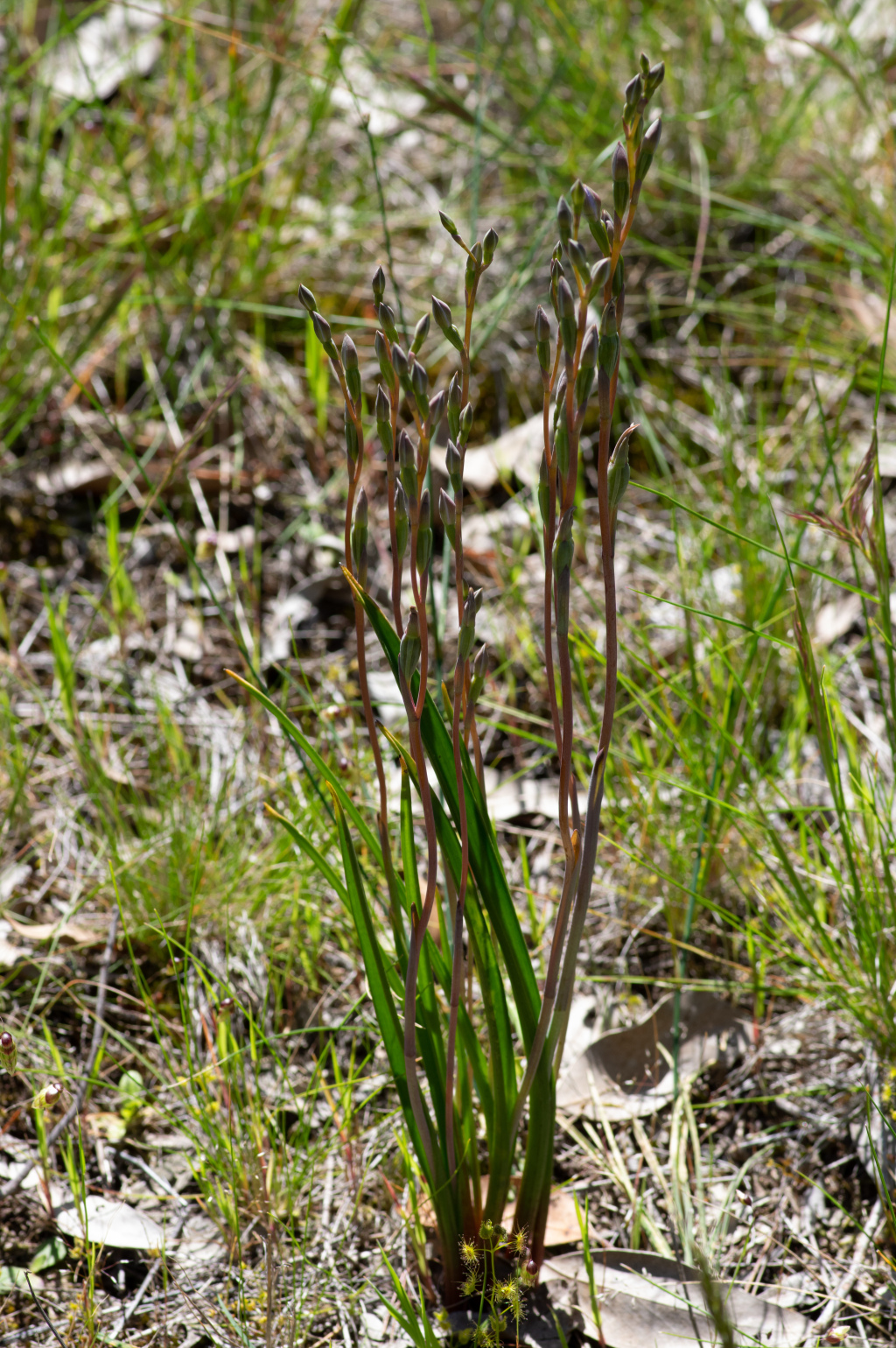Thelymitra exigua
JeanesFlowering stem erect, straight, (7–)15–25(–35) cm tall, 1–2.5 mm diam., usually purplish, sometimes green, usually longer than leaf. Leaf linear to linear-lanceolate, attenuate, (5–)10–22 cm long, 2.5–10 mm wide, fleshy, canaliculate, ribbed abaxially, sheathing at base, dark green with a purplish base. Inflorescence 1–8-flowered, open. Sterile bracts usually 1, sometimes 2. Perianth segments lanceolate to ovate, 5–11 mm long, pale blue to pale purplish blue, rarely pink or white. Column slender, 4–6 mm long, pale pink to pale purplish; mid-lobe expanded into hood over the anther, tubular, slightly inflated, curved gently forward, yellow with a dark brown to black collar, apex entire to shallowly bilobed; lateral lobes converging 0.8–1 mm long, digitiform, porrect at base then bent upwards sharply near the middle at c. 90 deg., each with a toothbrush-like arrangement of white hairs embracing the apex of the mid-lobe. Anther inserted about mid-way along column, shortly beaked. Flowers Sep.–Nov.
Wim, GleP, VVP, GipP, CVU, GGr. Also SA, Tas. Grows in grasslands, grassy woodlands, heathy woodlands, heathland and dense scrubland on heavy clay loams or sandy loams.
Widespread in western Victoria but poorly known.
Often grows in clumps by vegetative reproduction.
 Spinning
Spinning

